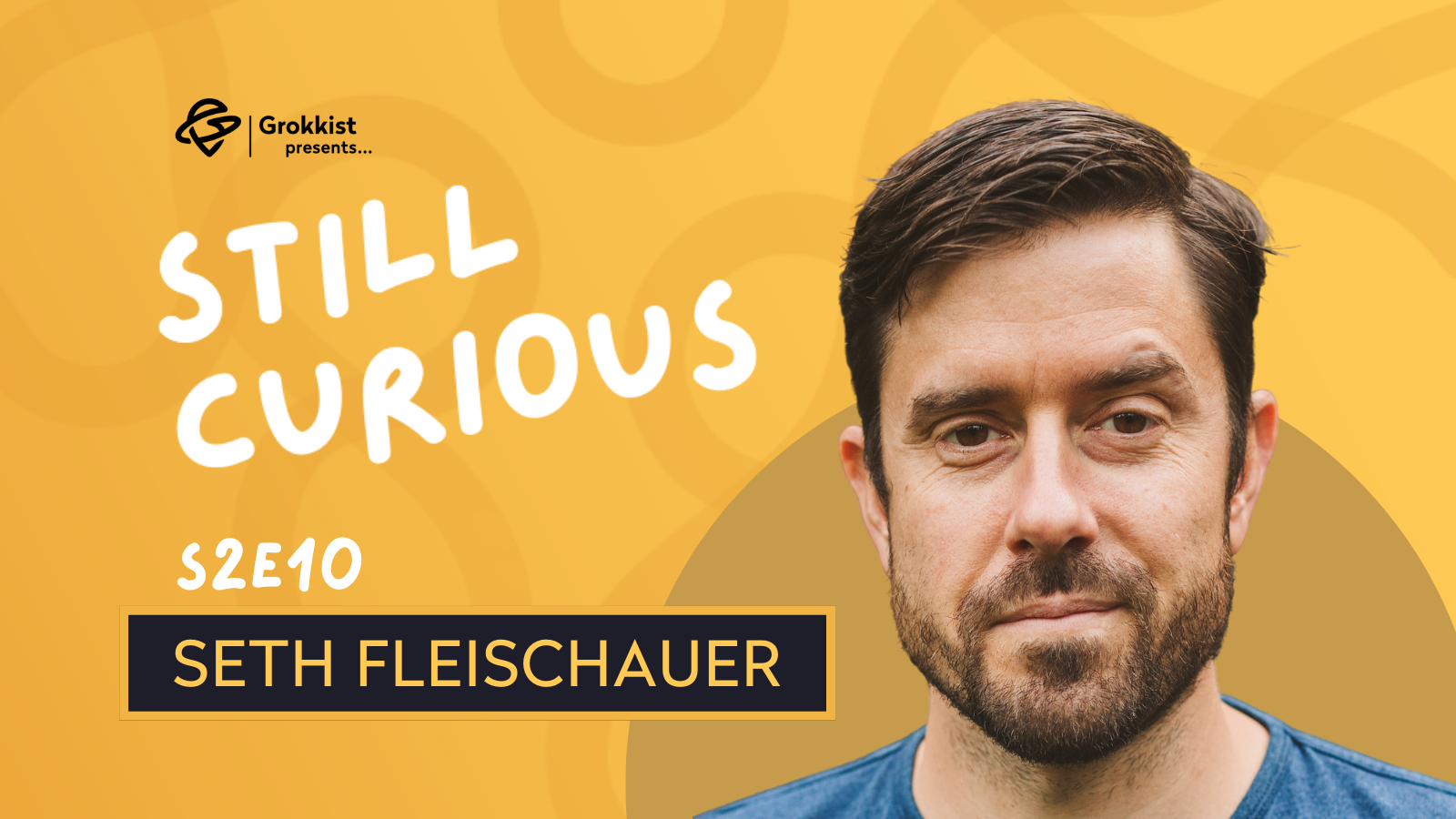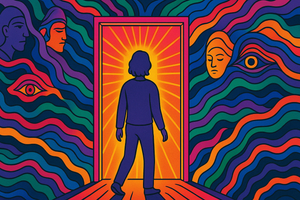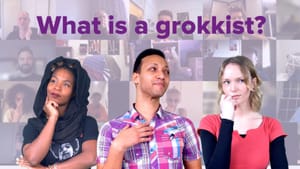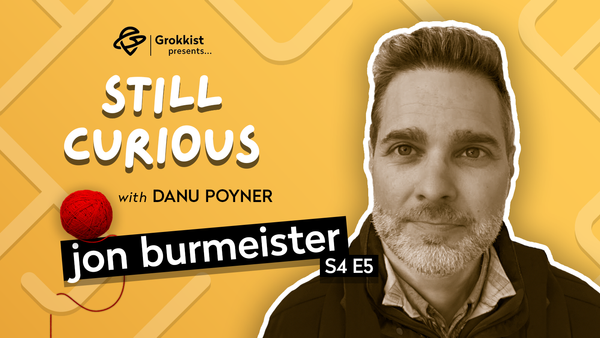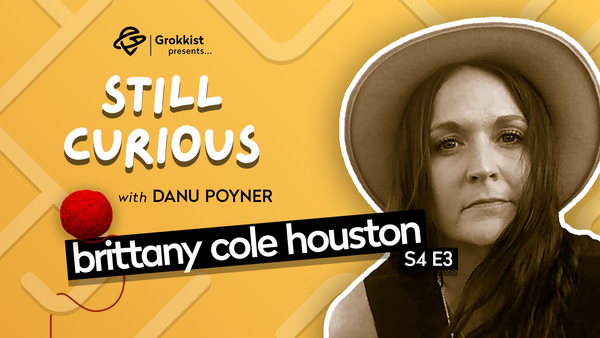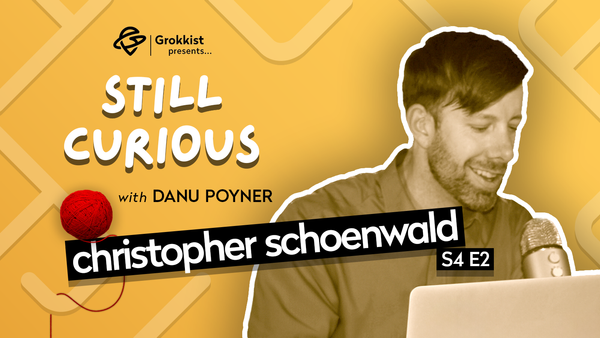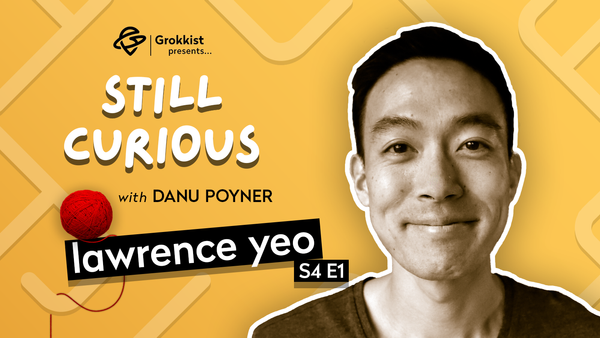Listen Now
About the Episode
Key Topics
- How Banyan Global Learning works with schools to help kids find their place in the world by exploring the intersection of language, culture, technology, and social and emotional learning
- Seth's squiggly career, from wanting to be a vet, to studying psychology, to teaching in high-needs public schools, to starting a company that delivers distance education globally
- What happens on a virtual field trip, why live video matters, and what it means to be a camera-ready teacher
- How Seth's experience of homeschooling his daughter during the pandemic connects to broader issues of reform, revolution and student choice in education
Detours and Tangents
- How being a real-life meme (Sad Mets Fan) is a weird kind of fame because you have to tell people about it first
- How Seth's self-understanding of being a person of privilege has evolved over time
Recorded 10 May 2022
Episode Digest
Seth's squiggly career
- Teaching was not Seth’s Plan A: “I had a lot of other things on my mind.” Growing up, Seth thought it would be cool to be a pilot. Then he wanted to be a vet until he shadowed a real vet in sixth grade, which was not what he expected. “I wanted cute fluffy animals, not blood.”
- Later when Seth went to college he thought he would be a doctor and was pre-med. “I think I just wanted to help people, is what it came down to.” But the science got too hard, perhaps because he had skipped AP Bio in high school in favour of taking astronomy at the local city college, which he found interesting and amazing.
- Seth then decided to major in politics, but realised that what he liked about politics were the sociological aspects that involved human behaviour. That led him to psychology, so he majored in psych and then worked at the American Psychological Association for a year after college before transitioning to the New York Academy of Sciences, where he ran educational programs. “There were six days of the year where we actually worked with students and those were by far my favourite days.” That’s when Seth realised he wanted to be a teacher.
- Instead of pursuing a masters of social work, Seth applied to New York City Teaching Fellows. “Ironically, some of those early schools that I worked at, I was essentially an unlicensed social worker. I think a lot of teachers feel that way.”
- One of Seth’s favourite teaching experiences during his twenties was at the Earth School in Manhattan. “Just a super beautiful progressive place that I had the privilege of teaching at when I was a young teacher.” Following that, Seth’s first three years of teaching at a high needs public school in Bushwick, Brooklyn made a big impression on him. “It was huge in bringing me outside of myself and understanding the impact education can have. I'm still in touch with some of those kids all these years later, and they're having kids of their own.”
- As a public school teacher, Seth found living in New York City difficult to afford. So in 2003, he started Tiger Tutoring. “I needed another income and obviously staying in education made a lot of sense. I had a couple of other alumni from Princeton where I went who were interested in joining forces, and we went around to some of the prep schools in the area, thinking that we could essentially get them to pay for the tutoring for some high needs students, because we knew that there was a lot of good financial aid available to a lot of those students.” It was 2-3 friends doing tutoring 2-3 nights a week. “It wasn't a huge operation or anything, but it was my first adventure into entrepreneurship, I guess. I didn't really see it as that at the time.”
- Seth enjoyed the one-on-one tutoring relationship. “It’s a really close relationship. You end up getting to know these kids really, really well.”
- In 2007, Seth went abroad to teach at a school in Taipei, Taiwan. The school was in the midst of making a pivot from their reputation in athletics back into academics and particularly English and technology. “I loved my time there, but I really didn't like what I was teaching. It was basically what we would think of as ‘teaching English’, a lot of grammar and vocabulary.” The school asked Seth to stay on for the year, but he had some ties back in New York. “I thought, how can I stay without actually staying here?” Videoconferencing technology was new at the time and seemed like a really good fit for that. The school agreed, and also agreed to create the infrastructure at their school in order to be able to make it viable at that time.
- Back in New York, Seth started Banyan Global Learning as his part-time gig to deliver a daily distance learning to his client in Taiwan, while continuing to teach full-time. He no longer had bandwidth for one-to-one tutoring on top of this. “I was driving out to Long Island to use the fancy video conferencing box and it became too much pretty quickly, to be out until midnight teaching and then drive back to the city and fall asleep and be up at six to go teach again.”
- Still doing classroom teaching in New York, Seth realised he had become burnt out. “I left the classroom because I had to. I remember the moment when I was like, ‘I can't do this forever.’ I knew that I was never going to be a hundred percent again and that influenced the decision to leave.” Seth made the decision to move to the west coast for a better time zone difference and continued to build Banyan Global Learning from there full-time.
- The teaching content itself became more interesting. “As we chipped away over the years, now we have something with a lot of projects. We worked with an amazing storyteller in Hollywood who helped us create some narratives of these Taiwanese adolescents who travel the world. Each chapter is about a different country or city and each chapter is also a jumping off point to a project. The core part of the curriculum is a series of these projects.”
- Over 15 years, the experience of running Banyan has taught Seth the value of slow change. “I've been really inspired by the types of changes that you can make when you point in a direction and say ‘we're going to get there eventually. Get a bunch of people, take one oar each and just start rowing in the same direction. You can do some pretty cool stuff.”
- For many years, the approach was just throwing stuff at a wall and seeing what sticks. Eventually Seth’s team ended up with a series of popular units. Kids really liked it and it was fun, but it lacked backbone. The team then went through a lengthy reflective process that involved talking to all the stakeholders and examining core values, which eventually produced three statements of expected student learning results: language, culture, and technology. These statements are broken down into progressively more detail and connected to each aspect of Banyan’s curriculum. “That was a huge leap forward for us. Having a curriculum that wasn't just one that the students really enjoyed that they got meaning out of as a bonus, but one that was meaningful from the start. That was probably the biggest, most significant change in the 15 years.”
- In early 2020, Seth’s team examined the domestic US market and decided to spin off the most popular part of Banyan’s daily distance learning program, the virtual field trips. “Of course, then the world changed dramatically and we responded to really what was my daughter's school community. I saw the life just kinda bleed out of her very quickly when the pandemic started and she was so isolated and I started running these calls with her and her friends that evolved into calls between her and her classmates, and then eventually the whole school.”
- Seth’s experience in learning over videoconferencing came in very handy during this time, and, with the help of a family member who is a social emotional learning expert, evolved into what is now Banyan’s social emotional learning program, which also includes digital citizenship. “We basically see it as SEL online. That's what we've been doing domestically. And then we've folded it back into what we're doing internationally.”
- Seth’s team continues to look for schools to partner with that are open to bringing in Banyan’s subject matter expertise. “We're really all about engagement. We come in, we make it breathe, we bring it alive. And we inspire students to bring their best self, not only to that moment, but to the moments that come.”
The Red Thread
- Banyan’s core purpose reflects Seth’s own journey – it’s about finding your place in the world. “We see that as an internal and external exploration, being able to get to know yourself to the extent that you can look at the world and understand where you fit into it. That intersection of language, culture, technology, social emotional learning, you need to have all of those things in order to be able to flow with this negotiation of where your place in the world is, which is not necessarily a physical place, could be a digital place, could be a place that constantly changes.”
Decisive moments
- Seth left classroom teaching because of burnout and the recognition that he could no longer give enough to the students who needed his help. “I remember the moment. It was a kid who I'd worked really hard with and he had backslidden in spring. I was working two jobs, I just started the company. I was tired. And when he backslid, it felt even worse than when I had started putting probably 15, 20% of my energy into this one kid. It was too much. I remember sitting there in the classroom and just being like, there it is, that's burnout. That's the feeling. And still really care for that kid. He's got a kid of his own now. But that was the moment. And within two weeks I told them I was not just leaving, I was moving across the country to go with this other job full time. I think it was the right thing to do, but it was hard. That was professionally one of the hardest things I've ever had to do for sure was leaving that school.”
- After a few years of growing his company by “just throwing stuff at a wall and seeing what sticks”, Seth initiated a thorough program of examining the team’s core values and embedding them intentionally into the curriculum design. “I used to think that core values were nonsense. But in doing core values exercises with my company, I was able to really discover my own core values and now I see them so clearly, it's Interesting to me that they were such a mystery for so long.” It was a big leap forward both for Seth personally and for Banyan.
How Seth likes to learn
- Curiosity is one of Seth’s core values. “Grokking feels almost spiritual. There’s this leap of faith where a person has to arrest their understanding and be open to new understanding.”
- “I really love talking to people, being inspired by people, asking questions. I’m a self-taught gardener. I've always said that the secret to gardening is the ability to fail, the acceptance of failure and paying attention. If you do those things, you'll be great.”
- Seth has a growth mindset. “That's another core value of mine, one that I didn't necessarily have until I went through some physical injuries and started doing some rehab on those injuries and discovered the intersection of emotional, physical, mental, and spiritual healing. There's this great book called 'The Body Keeps the Score' about how our body holds on to trauma and pain. I remember rehabbing my back injury and being on the massage table and just being reminded of something that happened in childhood. That sent me down a path of really trying to uncover what the real thing is here.”
Reflections on practice
- On social and emotional learning: “It's essentially doing the hard work of knowing what your feelings are and being able to express them, but also knowing the emotions and the feelings of others. The reason that we want to do this is so that ultimately we can make the best choices, choices that are not only good for us, but good for the world.”
- On defining a core purpose: “It's gotta be able to speak universally, but also individually to everybody who is living it out.”
- On virtual field trips: “Imagine a field trip that happens on a school bus, but without ever having to leave the class. And really leaning into the medium and what becomes available when you break down the four classroom walls and connect to new people, undiscovered places, and fresh ideas. There are a whole bunch of people who you would not have access to if you were limited to your physical space. We want to bring students all around the world if we can to slices of life that they wouldn't necessarily have experienced within their own communities. Not every teacher is an expert in everything that they might want to bring into their classroom. Having this technology available to us to be able to bring in experts and ideas that might otherwise not ever make it there, we think that is part of the real power of the technology. We take kids all around the world, but we also have puppet shows that teach about social, emotional learning, and narratives that the students interact with to solve problems and exercise their digital citizenship skills. It's all live.”
- On live video: “There's something to knowing that what you're seeing is what's happening right now on the other side of the world. Our teacher Jill in Brazil takes the students down the main street of Isacare, this little beach town that has a pretty diverse culture. The students are all looking for little representations of that diversity. So looking in the storefronts for different cultures represented on this little main street of this little surf town in Brazil. I’d say that the secret sauce to what makes these trips so effective is that we really seek to maximize engagement and do that by leaning into the benefits of the medium. We make sure that there is a central purpose to why they are on this trip. They are trying to answer a question they are trying to investigate. And it could be one that's framed with a narrative. They could be trying to solve a mystery. We really focus on that question. What are the students doing here? Watching video can be a really passive experience and we want to make sure that it is not, that the students are actively participating in what is going on and having an effect on what they see on screen.”
- On homeschooling during the pandemic: “As I was creating these lesson plans I realised I had this opportunity to actually go straight-up project-based student choice, life is the curriculum, unschooling, whatever I wanted to do. We had this whole day where they went out and picked flowers and made these little flower arrangements and it was beautiful. We had days where we went and picked cherries and made cherry pie, had them pit all the cherries and then weighed them and did all the math with the recipe of making the pie and got to actually taste the thing that they were creating. They had to figure out how they were going to get up high, to get the cherries off the tree, all these little problems that life throws at you when you have a goal to do something you haven't done before. We just tried to replicate that over and over again. And then when my daughter went back into the classroom, it was this really sadness around it where I was like ‘okay, now she's going back and doing a lot of the same things again’. I wonder how many parents feel that same way, where there was a little bit of a helplessness after having the ability to shape so much of what they learned for so many months and then to have them go back in and have some of the same old, same old come back.”
- On optimism for the future: Everybody in the world had this time to sit and look around and be like, is this working? This enhanced consciousness that happened as a result of the pandemic, I think is something that the world direly needed. The great resignation I think is an amazing exercise of power. And people just looking around and understanding what they have the power to do, the choices that they can make. The combination of that enhanced consciousness that the pandemic was bringing plus this opportunity to teach my kid from home, plus this opportunity to be connected with all these people on LinkedIn, mixed with my personal professional experience gives me some real optimism for the direction that I think things can go.”
- On mental health: “I think that this new emphasis on mental health is one that is so needed. And finally de-stigmatize this idea that you can take care of yourself. It's okay. And we're now teaching that to kids who are four and five years old. That's amazing. Imagine these kids when they grow up.”
- On reform vs revolution and student choice in education: “I'm a reformer, not a revolutionary because I believe that there's still a lot of good in the system. The people who are in it, many are wonderful people who are doing the best they possibly can within a system that seems to be very broken and not serving a lot of people. I do acknowledge that being a reformer is a position of privilege. This system is one that worked for me, and that is working for my kid and isn't actively undermining them the way it might be undermining some other students. I have a great Montessori public school that I was able to get my kid into, so kind of dodged that bullet because I didn't think that he was going to do very well in a traditional system. I understand revolutionaries and I am friends with a lot of them. I understand the sentiment. I just worry about what happens when it all comes falling down. And I see the powers that are at play in America right now. I just don't know who comes out on top in a situation where it all crumbles. That gives me pause. I believe that the radicals should have their radical choices and then the traditionalist should have their choices as well. And I believe that everyone, regardless of who their parents are, what they believe or where they lie politically, they're all entitled to a good education. What that means obviously is an active societal conversation but I do believe that people, including parents, should have some influence over what their kids learn. Even when that's not something I personally want them to be learning, I just think that choice is important.”
Stuff We Mentioned
Organisations
Books
People
Audio Highlights
Episode appetiser - What it means to be a camera-ready teacher (29 sec)
0:00
/0:29
Seth explains social and emotional learning to a 10-year-old (23 sec)
0:00
/0:23
Seth's experience of homeschooling his daughter and her friends during the pandemic (56 sec)
0:00
/0:56
An example of 'life as the curriculum' during pandemic homeschooling (49 sec)
0:00
/0:49
What happens on a virtual field trip (23 sec)
0:00
/0:23
About Seth Fleischauer
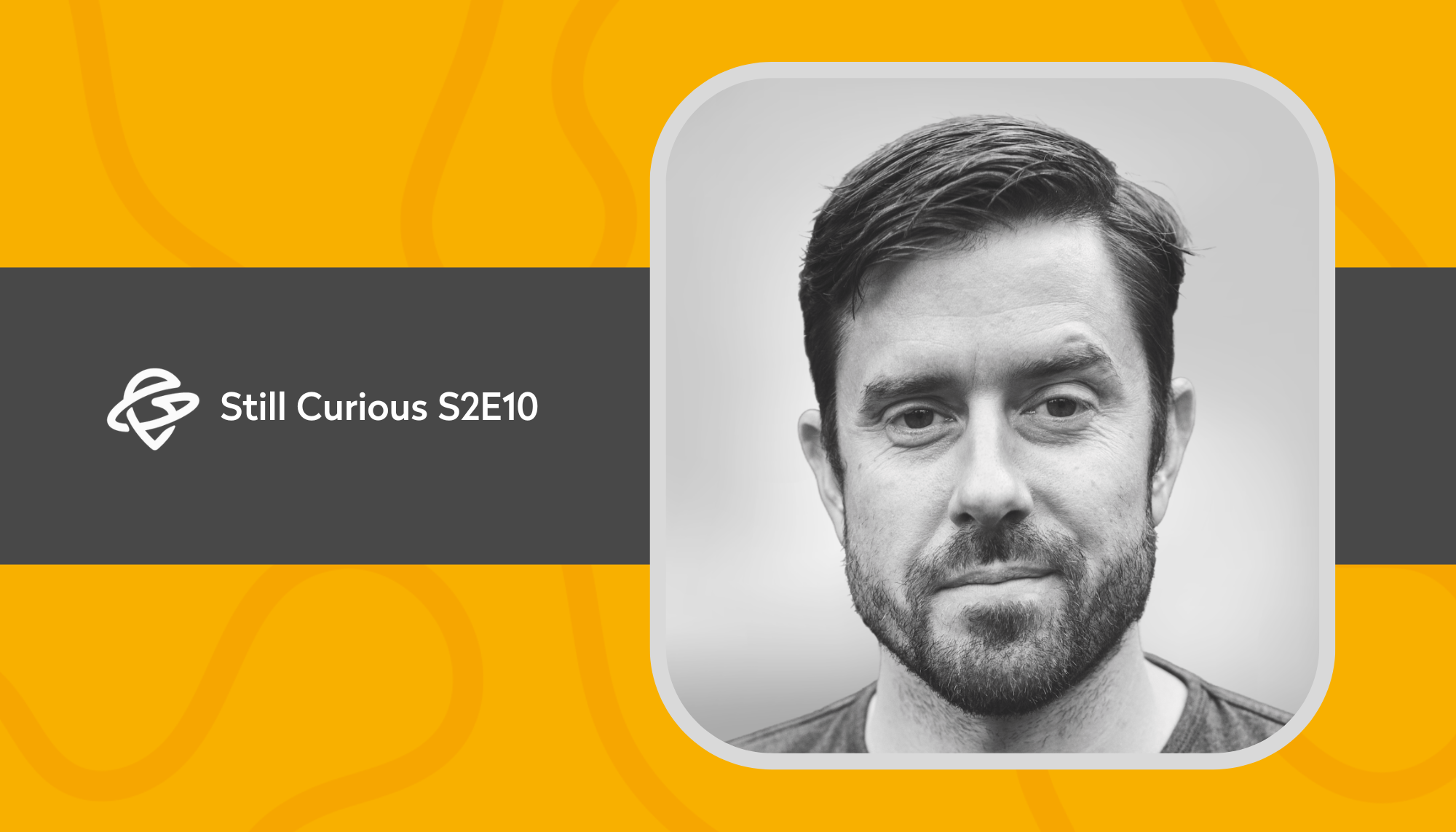
Seth's work is at the intersection of technology, language, culture and social and emotional learning. By connecting students to people & places to whom they would never otherwise have access, Seth believes that live video conferencing is an underutilized force of positive, revolutionary change in education. Creating positive change in education is Seth's ikigai, his reason for being.President & founder at Banyan Global Learning; expert in video conferencing, international teaching, SEL & K-12 online education. Seth will forever lean on his experience as a public elementary school teacher to create authentic and meaningful educational experiences.
Connect with Seth
Interactive Transcript
Note: This is a machine-generated transcript and may contain errors.


